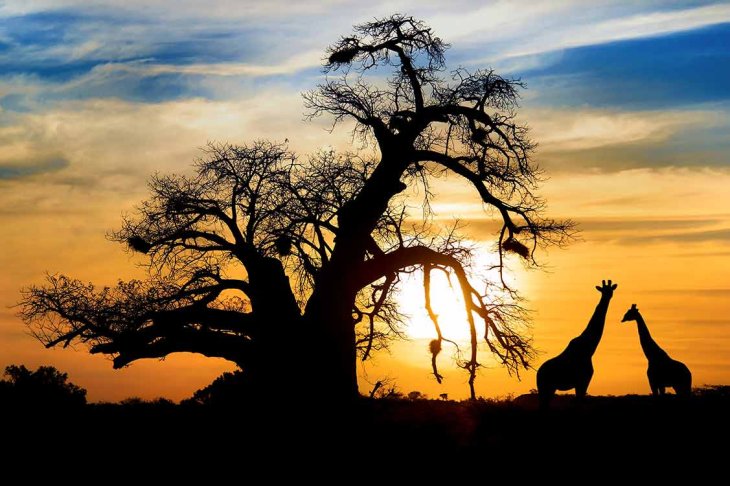
South Africa is one of the most modern and diverse countries in the world. Whether it is its melting point of culture or its bold mix of stunning countryside and modern bustling urban areas. South Africa is a truly exciting wonderland. However, there are a number of things visitors should know before heading to what many consider to be the jewel in southern Africa's crown.
Currency: The currency used in the country is the South African Rand, with £1 equal to around 22.47 Rand.
Climate: The climate often varies across the country, with conditions often ranging from Mediterranean in the south west to temperate further inland and approach subtropical in the northeast. Generally speaking, the coldest months are between June and August, while summer temperatures regularly hit the early to mid-30s during the summer.
Customs and etiquette: The rich level of diversity across the Rainbow Nation means that communication can vary depending on the ethnic heritage of the person with whom you are talking to.
Generally, when meeting foreigners, South Africans will shake hands while maintaining eye contact and smiling. However, it is not uncommon for women to refuse a handshake in favour of nodding their head. It is therefore best to wait for a woman to extend her hand before making any assumptions.
Tipping workers is also a widespread custom across the country and cars also drive on the left side of the road.
Cape Town
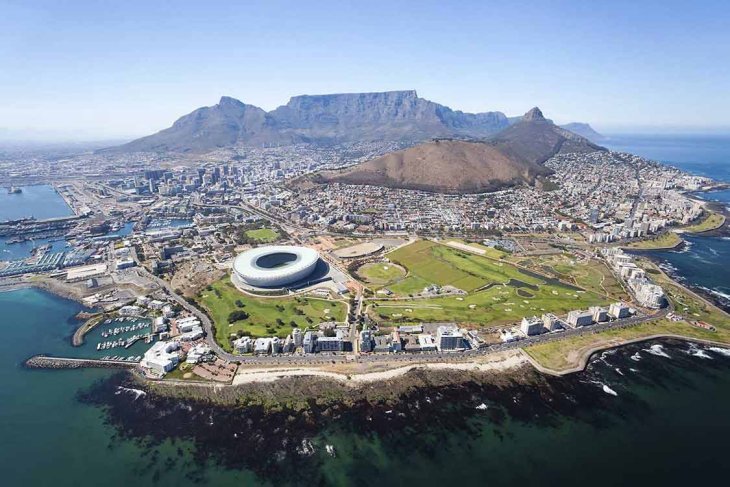
It's easy to see why so many visitors swoon about Cape Town. It is a city with a cool urban edge, set against a backdrop of a stunning mountain range that offers a steep drop into the glittering, sapphire-coloured seas, punctuated by pristine white beaches. Cape Town is a city that really does have it all.
Culture and what to see: The unique nature of the city, which is surrounded by slopes, means it is relative small, meaning one of the best ways to have a look around is on foot or on a bike.
The various pedestrian bridges mean it is possible to walk from the city centre to the Green Point (or from the Green Point to the Waterfront ) with ease.
Take a stroll through the city and its architectural roots and multi-cultural population soon becomes clear.
Culture is a big part of the city's identity and the first Thursday of every month sees art galleries across Cape Town open late, with shops and restaurants also contributing to a vibrant atmosphere.
History, like many other parts of the country, is also important and is never far away, no matter where you happen to be.
The Footsteps to Freedom guided walk is a fantastic way to really get to grips with the Cape Town's rich and sometimes difficult history.
Must See: While the city itself presents a large number of great activities, it is difficult to really get a true grip of what makes Cape Town great without going up the 500 million year old Table Mountain.
Originally known as Hoerikwaggo, “Mountain of the Sea”, this plateau dwarfes the sprawling city below and is a great journey for any visitor.
While it's easiest to ascend by cable car, to enjoy the lush beauty of the fynbos carpeting the mountain slopes, walking up is a must. Although this option may not be for everyone!
Shop: The Watershed at the Waterfront is a popular shopping hotspot for many visitors. Containing more than 150 stalls it offers an extensive collection of locally-produced fashion, jewellery, textiles, toys and homeware.
The Green Market Square, Long Street, Bree Street and Loop Street are also worth a visit as is Woodstock, which contains the densest concentration of contemporary design and art in Africa.
Getting Around: The city's public transport has greatly improved in recent years, with the current system now linking the airport, city centre, Gardens area, Waterfront, Camps Bay, Hout Bay and more. However, the best way of getting around is arguably to hire a car, with many of the road rules virtually identical to the UK.
Port Elizabeth

Port Elizabeth goes by many names, including ‘The Friendly City and ‘The City on the Bay’. Situated on Algoa Bay in the Eastern Cape Province the city is most widely known for being a major port in addition to its many beaches.
Port Elizabeth's winter climate (whilst on tour) is comparable to a typical British summer, perfect to enjoy a leisurely day at one of the three Blue Flag beaches the city boasts: Kings Beach, Hobie Beach and Humewood Beach. If it’s a warm day brave a dip – the Indian ocean is usually pleasant enough, even during their winter!
Must see: Port Elizabeth boasts some of the most spectacular and safest beaches in South Africa, with more than 40 kilometres of sun-splashed sand spread along the Algoa Bay, there’s plenty of room to find your spot and soak up some rays!
Near Hobie Beach is a beachfront wooden walkway, perfect for a serene wonder whilst you take in some breath-taking scenery. Get up early and if you’re lucky you might spot some bottlenose dolphins enjoying the waves or visit in the evening to watch the sunset over the ocean.
Shop: Situated to the West of the city, the Baywest Mall contains a huge number of well-known brands in addition to an ice rink & cinema, perfect to fill one of Port Elizabeth's few 'bad weather' days. There's also the Walmer Park Shopping Centre, offering a great variety of shops, whether you're looking for big brands or want to visit some of the many boutiques, coffee shops and places to eat, it's definitely worth a visit!
Getting Around: As one of South Africa's major cities Port Elizabeth is very well connected with transport options, the public bus system has undergone a major refurbishment in order to cope with the demand for the football world cup in 2010, meaning that you wait no longer than 15 minutes to get a bus.
Durban
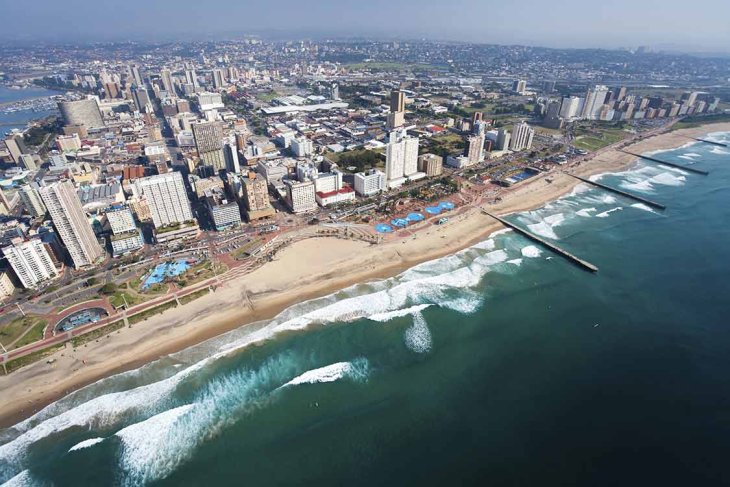
Durban is South Africa's third-largest city and has a reputation for being a cosmopolitan hub of culture.
The city received an extensive makeover when the FIFA World Cup arrived in 2010, with a stylish and modern waterfront area now the centrepiece of this bustling metropolis.
That's not to say the city is devoid of visible history. Durban's downtown area contains a number of grand colonial buildings, which sit alongside some wonderful art deco architecture.
Culture and what to see: Durban is home to the largest concentration of people Indian descent outside of India, giving it more of an Asian feel when compared with the rest of Africa.
Visitors to the city can take a guided waling tour of the district around Dr Yusuf Dadoo (Grey) and Bertha Mkhize (Victoria) Streets to immerse your senses in the city’s Indian heritage and history, which has helped to influence various aspects of everyday life, including the food.
A popular dish is the Bunny Chow, which is unique to Durban and comprises of a hollowed out bread roll filled with the curry of your choice.
Outside the city, visitors can take in some breathtaking scenery. To the north is the bustling coastal town of Umhlanga, packed with hotels, restaurants and beautiful beaches, while to the south lies the Sapphire Coast, an endless stretch of sub-tropical paradise laden with numerous holiday towns.
Must see: Journey out west and the mighty Ukhahlamba Drakensberg Park – a World Heritage Site – beckons.
Shop: A number of cosmopolitan shopping malls have sprung up across the city, giving shopaholics plenty of choice, but for those looking for something a little different, the Markets of Warwick is certainly worth a visit. Containing as many as 5,000, punters are treated to wonderful selection of goods, including fresh food, herbs and textiles. Tours around the various markets are available and very popular with tourists.
Getting around: Travelling by car is probably the best way to get around the city, but the arrival of the World Cup in 2010 saw substantial investment in Durban's public transport, offering a number of extensive bus routes.
Durban has several reputable metered taxi companies, but it is worth bearing in mind that these can be expensive for long-distance journeys.
Mbombela (formerly Nelspruit)
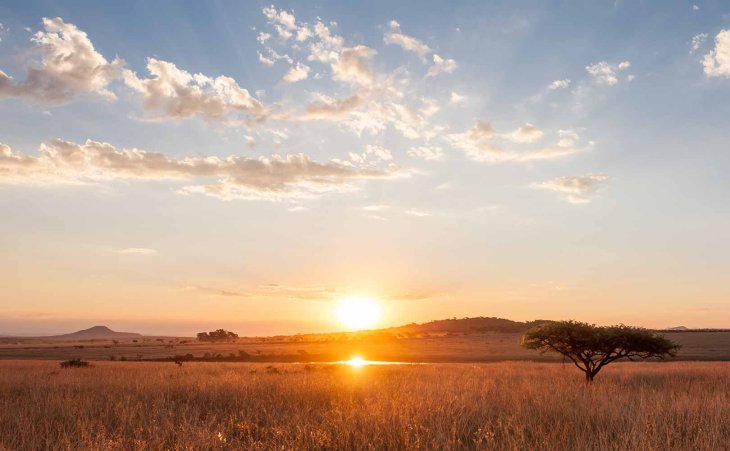
Mbombela, formerly known as Nelspruit, is the capital of South Africa’s Mpumalanga Province and is known for being the gateway to the famous Kruger National Park. Notorious for the abundance of beautiful wildlife across the impressive 2 million hectares it is one of the world’s largest nature reserves. The national park is worth a visit, if you are lucky, you’ll spot the famous big 5 in action!
Must See: One of Mbombela’s most popular attractions is the city’s Lowveld National Botanical Garden which features a spectacular man-made rainforest. With over 600 native and 2,000 important plants the gardens offer visitors a chance to relax and take in the rich biodiversity of the area on one of its many boardwalks.
Shop: The Nelspruit Farmers Market offers fresh produce brought by local farmers in addition to a large number of unique art and craft stalls. The market is always a hive of activity, great for those who want to immerse themselves fully in Mbombela's rich culture. While there is plenty of places to go shopping the real jewel in Mbombela’s crown is being so close to such a spectacular landscape and variety of wildlife.
Getting Around: Travelling around Mbombela by car or bus will give you the chance to take in some of the beautiful scenery and meandering mountain passes of the surrounding area. Beyond the city is still quite wild and you may view small game and even some vervet monkeys and baboons from the window.
Pretoria
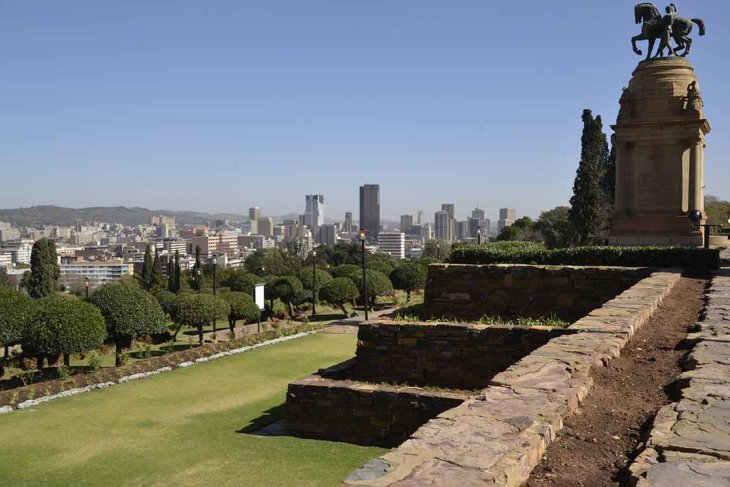
The administrative capital of South Africa, Pretoria's city centre abounds with historical architecture, contrasting with various attractive leafy suburbs and wide streets.
A city that was once at the heart of the brutal apartheid regime, Pretoria is not short on history, however troubling it may be.
Despite its past, Pretoria is now arguably one of the country's strongest symbols of multiculturalism and is seen as the home of modern South African democracy.
Culture and what to see: History is a big part of Pretoria's identity, with various historical monuments dotted around the city.
One of the lasting symbols of its Afrikaner identity is the Voortrekker Monument, which is located to the south of the city.
This huge granite structure, located on a hilltop, was built to commemorate the Voortrekkers, who left the Cape Colony between 1835 and 1854, having lived there during the 1830s and 1840s.
Another important site is the Union Buildings, which forms the office seat of the South African government, while also housing the offices of the country's president.
If the Voortrekker Monument is a tip of the hat to South Africa's Afrikaner past, then the Union Buildings is a symbol of the country's past and, indeed, its future. It is a sight that serves as an emblem for the country's dedication to democracy and provides a fitting backdrop for the inauguration of its presidents.
Those looking for something a little more serene may opt for the Pretoria Botanical Gardens, which provides a captivating and peaceful floral journey for visitors.
Must See: While not strictly inside Pretoria, Horseback Africa is nevertheless a stunning day out. This is essentially a safari with a difference, allowing punters to roam the bush and explore wildlife in a way not possible by car.
Shop: Pretoria contains a number of shopping malls, with the most intriguing being Menlyn Park as it contains a large rooftop drive-in theatre. Other options include the Brooklyn Mall, Kolonnade, Centrurion Mall, Wonderpark and Silver Oaks. Meanwhile, foodies may well fancy the German bakery in the east of the city.
Getting Around: There are a number of bus routes operating throughout the city, as well as several metered taxi firms, but minibus taxis are perhaps the most common form of public transport. A trip to most parts of the city will cost around 12 Rand, with some running throughout the night.
Johannesburg
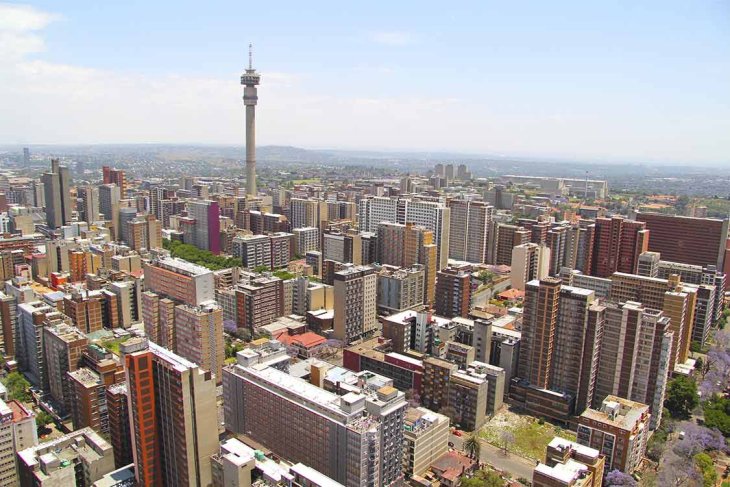
Johannesburg, the fast-paced yet friendly metropolis at the heart of South Africa, is rapidly evolving. Home to three million people, the bustling city is home to dozens of districts - all offering something different for visitors to explore: whether you’re looking for arts and culture, fine wine and dining, historical intrigues, a great place to shop or an off-beat hipster vibe, Jo’burg has it all.
Culture and what to see: Newtown, situated in Johannesburg’s inner city, is very much part of the creative and cultural hub that has emerged in the past decade.
Its famous market theatre, which played a significant role during the Apartheid era, is one of its top attractions. Committed to non-racial theatre from 1974, this former Edwardian market hall was transformed into an important cultural platform.
In total there are three theatres and two art galleries in Newton, and on Saturday morning visitors can enjoy a jaunt around the flea market at the theatre. Evenings in Newton should not pass by without a visit to Kippies - a legendary jazz club with a strong tradition in the genre.
Just over the Nelson Mandela Bridge from Newton is Braamfontein: an absolute must for those who enjoy art. Despite a dubious start as a space for corporate head offices, the area now acts as an arena for some of the best public art in Johannesburg, with a wide range of street art, installations and galleries. It also boasts everything you would expect of an up and coming area: nightclubs and bars, boutique clothing stores, coffee shops and restaurants.
Maboneng - a Sotho word meaning “place of light” is the place to go for all your hipster needs. Take a trip to this vibrant district and you’ll never be bored - a short wander around its colourful streets will reveal quirky fashions, breathtaking pieces of art and an ice-cool culture all of its own.
Head to the Maboneng Precinct to take in landmark murals and sculptures if you don’t have much time, or alternatively get under the skin of the area with a Main Street Walk tour, which will take you from Maboneng’s galleries to its resident traditional healers’ market. Market on the Main is another must-see if you’re in the city at the right time. Meander around its stalls to enjoy local crafts and designs as well as street food native to Africa.
The complex and at times heartbreaking history of Jo’burg is not something to avoid on your trip, and The Apartheid Museum is a moving way to immerse yourself in the city’s past. The museum is incredibly informative and yet also immerses visitors in the experience and the emotion of the turbulent time.
Must See: While there’s boundless things to see and do in urban Johannesburg, one of the reasons many people head to South Africa is for its unbelievable natural beauty and safari opportunities that are like no other place in the world.
There are plenty of nature tours and safaris you can take from the city, giving visitors ample opportunity to spot the big five. Numerous companies run tours that enable you to see lions, elephants, zebras and more - just ensure that the tour you choose is an ethical one!
Shop: Johannesburg is arguably the shopping capital of Africa, with 'local' and 'hand-made' common phrases in many of the stalls and shops dotted around the country.
The Oriental Plaza is a particular highlight and is packed with independent shops that add vibrant colour to the city. Visitors can purchase homeware, fashion, electronics and even a samosa. Alternatively, there is a variety of pop up stores and art markets, meaning visitors are sure to find something unique.
Getting Around: Life in Johannesburg is often spread across various suburbs, meaning the public transport system is pretty substantial. Services like the Gautrain have proven particularly popular with visitors and locals alike.

